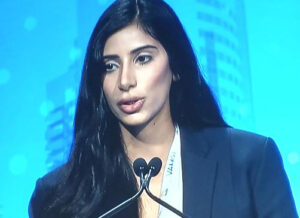
Tilting or hooking occurred significantly less often in the process of retrieving the Denali inferior vena cava (IVC) filter than with the Option IVC device, a retrospective review at a tertiary care center has established.
The research team behind the analysis—which was designed to compare outcomes and costs of IVC filter retrieval when using the two most commonly deployed devices for the procedure—showed that use of the Denali filter resulted in lower retrieval costs owing to shorter procedure and fluoroscopic times, “offsetting the initial [higher] expense of the filter.”
Jasmine Bhinder, MD, and colleagues University at Buffalo in Buffalo, New York, were delivering the findings at the Eastern Vascular Society (EVS) annual meeting in Philadelphia (Sept. 29–Oct. 1).
Bhinder et al looked at all patients who underwent IVC filter retrieval or attempted retrieval at the university-affiliated medical center over a five-year period across demographics, comorbidities, filter brand, procedural data, retrieval cost and complications.
Retrieval was attempted in 57 Denali and 44 Option IVC filters, with secondary procedures attempted in none of the Denali cases vs. 4.5% of the Option deployments (p=0.44), the research team reports.
They further find that Denali filters “were less likely to have significant tilt of greater than 5° [14.0% vs. 38.6%] or have the hook embedded in the IVC wall [0% vs. 11.4%; p< 0.001].” Device fracture (1.8% vs. 0%) was similar (p=0.38), Bhinder and colleagues demonstrate. Months to retrieval was 12.4 for Denali vs. 11.2 for Option (p=0.75). The Bard retrieval device was used in 89.5% of Denali and 71.7% of Option cases (p =0.09).
Additionally, the Denali was more likely to be successfully retrieved on first attempt (94.7% vs. 79.5%; p =0.019), with similar overall success following secondary attempts (94.7% vs. 81.8%; p=0.056), they show. Need for adjunctive procedures was similar (0% vs. 8.7%; p=0.08), as were procedure-related complications (0% vs 4.3%; p=0.08), the team adds. The Denali device also had shorter fluoroscopy time (7.4 minutes vs. 22.2 minutes; p=0.001), procedural time (32.0 minutes vs. 60.7 minutes; p<0.001), total hospital costs ($3,154 vs. $5,245; p<0.001), and procedure costs ($1,333 vs. $1,985; p<0.001).
When secondary retrieval attempts were included, hospital costs—distributed across all Option retrievals—increased to $5,981 and procedural costs to $2,098, Bhinder et al reveal. The average price of the Denali filter is $1,675 vs. $850 for the Option, they note.
“Although the price of the Denali IVC filter is nearly double that of Option, tilting or hooking occurred significantly less often with Denali,” the researchers concluded. “These factors, which make retrieval more difficult, resulted in shorter procedure and fluoroscopic times with [the] Denali and, ultimately, in lower retrieval costs, offsetting the initial expense of the filter.”












